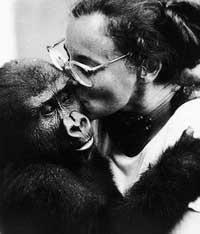Quo vadis, paleontology?
1995/11/01 Nuñez-Betelu, Koldo Iturria: Elhuyar aldizkaria
Although Paleontology is a science that studies the history of the Biosphere, as it happens in other areas of society, there are also fads or there are. These trends change according to the needs of society and the advances and discoveries made. In a broad sense, the 1970s belonged to the tacit equilibrium, the massive destruction of 1980 and the paleoecology of 1990. In paleoecology, climate change and evolution and destruction are particularly relevant. The potential for climate change through human action today, among other things, greatly worries us that it can harm our economy.
However, to anticipate climate models and possible changes they may suffer, we need basic data on Earth's climate behavior, for which Paleontology is desired and sufficient. Along with climate change, another problem we are experiencing today is biodiversity reduction. Although this time, unlike many other occasions, the cause of the destruction is biotic, that is, because of humans, based on the biological crises of Faneorozoic, Paleontology can offer better the context of the problem and its possible solutions than other sciences, since the fossil record is an extremely archive.
However, in addition to these broad topics, Paleontology will address other specialized topics in the coming years. For example, quantitative studies of morphological and taxonomic diversity, simulation, actualistic approaches and phylogenetic and cladistic research are gaining momentum today and their importance will be increased in the near future. From this path, both paleobiological models and the influence of sampling and conservation in the fossil record and their interpretations face profound challenges. Moreover, the molecular bases of biological development pathways have already begun to be studied and the results obtained expect a great future for this type of study.
For example, the development processes of vertebrates and the Drosophila fly are very similar and in these two groups of beings the systems that control the dorso-ventral model are the same. In addition, the Pax-6 gene controls the formation of the eyes in both the Drosophila fly and vertebrates. These discoveries are but a drop that can offer us a near future within this field.
On the other hand, and continuing with the future of Paleontology, using comparative biology and molecular development biology, we will soon know what beings were both morphologically and porterally, and what genes have been specific to form the elements of the body plane. Quantitative studies of the form of beings have already begun to describe the morphological evolution models of the main groups. Thus, paleobiology has begun to acquire the ability to understand concrete facts through biological development, phylogeny and morphometry.
As changes are occurring in various fields of paleontology, deep changes are also anticipated in paleobotany. For example, based on data from recent years, it is possible to innovate in plant systematics. This will restore and build a superior phylogeny to the family of all plants. Moreover, using morphometry and genetics, the development and relationships of plant body plans can become the goal of many studies, as is already happening with flower studies. Therefore, Paleobotany is already participating comprehensively in the construction and evaluation of many old and new evolutionary hypotheses.
In short, where does Paleontology go? Following the usual path, that is, integrating biology and geology as a whole, towards a true synthetic Paleontology that aims to reconstruct the history of the biosphere.

Gai honi buruzko eduki gehiago
Elhuyarrek garatutako teknologia






